Wednesday Walk: Slow Trains
More refrigerator writing, a roundabout commute, a Christmas Tree leftover
Welcome to Willoughby Hills!
Every Wednesday, I offer a few short ideas that I hope will inspire you to do some more reading, thinking, and exploring. Let’s take a little walk together and see where the path leads…
More Refrigerators
I heard a lot of good feedback after last week’s piece about refrigerators that are dying premature deaths, sometimes after only a year or two in service. It turns out that many, many people have run into this problem and have personal anecdotes about it.
All of this has me thinking more about older refrigerators while trying to figure out how new is too new and how old is too old.
who publishes on Substack commented on my piece last week that his mom had an International Harvester fridge from the 1950s that lasted her 50 years before giving it away. Lloyd believes it’s still in service.While the notion of a vintage fridge that’s built like a tank (or in his case, a tractor) is intriguing, I also am well aware that old refrigerators used to be much smaller. While it’s not necessarily an accurate representation, I snapped a photo of the refrigerator from the turn of the twentieth century in the Disney ride Carousel of Progress last summer. The entire vintage fridge appears to hold the equivalent of a single shelf in a more modern fridge. Going vintage would come with some serious compromises.
In that vein, Lloyd published a piece this week titled “How Did Our Fridges Get So Big?” In that essay, he ties larger fridges to two other big changes that started to sweep our landscape post World War II:
“The big fridge, the big car, and the big grocery store were all part of one economic machine; in a sense, you cannot have one without the other two. And as the stores got bigger, so did the cars and the fridges, mainly by using better insulation and having much thinner walls. The system was built for suburban living, with more space for more storage, for people who had the cars to carry the bigger and heavier packages with lower prices. And it was built to encourage us to buy, store and consume ever-larger quantities of food.”
If you’re curious to learn more about how big fridges became the norm and how that development was closely tied to the growth of supermarkets, I encourage you to check out Lloyd’s piece.
Off Track
I’ve been commuting into Boston this week for work, which usually means driving to the furthest out station on the subway network, parking there, and riding the train into town. Parking in Boston near where I work is both very expensive ($32 per day) and a good 10 minute walk from where I need to be. Parking at the train station and getting a roundtrip subway fare is about $14 and it drops me steps from where I need to work. Riding the train has been a win-win for the times I need to be in the city.
When I arrived at the subway station Monday morning this week, I discovered that the turnstiles had been fenced off and the Red Line was closed through much of Cambridge, with service being replaced by shuttle buses. Somehow I had missed the memo that there’s a multi-station closure for the next two weeks. I suddenly had to scramble to figure out the best way into town.
I made my way outside to the shuttle buses, which were actually nice coach style buses. I figured I might have a slight delay, but didn’t expect a major disruption to my day. As I found a seat on the coach “We Are the World” blared over the bus speakers.
The bus slowly lurched through rush hour traffic. “Africa” and “Under Pressure” came and went on the radio. After half an hour, we still hadn’t arrived at the next station on the Red Line. As we sat in traffic outside Davis Square in Somerville, I politely asked the driver to let me exit the bus. She obliged.
At this point, I made the decision to walk to Ball Square in Somerville about 15 minutes away, where an extension to the Green Line had opened about a year prior. I had always had an interest in riding the new section of track and I seemed to now have an excuse.
I eventually arrived at work after nearly 90 minutes of public transportation travel to go a distance of about 6 miles as the crow flies. It was not fun.
To get back to the parking garage after work, I took the Red Line for a few stops and then transferred to a local bus that got me near to my car (with about a five minute walk). It took some studying of transit maps to figure out that was an option, and it sure beat taking the Green Line and walking a long way or taking the slow shuttle buses again.
On Tuesday, I decided to try parking at a station on the Orange Line, about a 20 minute drive from where I usually park, and riding that train into town. It went better, but was still less than ideal because of the increased amount of time in my car.
In changing up my routine this week, there was a bit of enjoyment that came from the challenge of trying to figure out how to navigate through the city without access to my usual train. But it was also a wildly inconvenient experience that has already wasted a ton of time for me this week (and will waste even more as the week goes on).
I am fortunate that I didn’t need to be at a specific place at a specific time. If I had an hourly job that required me to show up for a scheduled shift, it would have been much harder to have absorbed these delays.
Similarly, I ride public transit out of preference. I choose to save a little money and avoid the headache of driving in the city. I recognize that for many people, public transportation is their only option for getting to work, school, appointments, and other commitments. I have the privilege of opting out of the subway and driving or even taking an expensive Uber if I choose to. Many folks are forced to rely on an unreliable transit system.
All of my alternatives involved some walking too, which could prove challenging to those with mobility issues or that use assistive devices like wheelchairs or crutches.
If we’re having these problems in Boston, a city with a legacy transit system that covers large portions of the city, I can only imagine what it’s like in cities that don’t have the same infrastructure to have to rely on public transportation.
It reminds me of a quote that Vishaan Chakrabarti shared in my recent podcast episode with him:
“A developed country isn't where poor people have cars, it's where rich people take transit.”
We need a robust transit system that is a valid option to all residents: rich and poor, young and old, able bodied and disabled. I’ve written before about the needs for support of all forms of transportation, not just cars. I wish we would start to prioritize that more in our cities.
Out Cold
I’m always intrigued by people that make smart reuse of old shipping containers. I’ve heard of people building tiny homes out of them, stacking them to make modular housing, and I even saw one repurposed as a bar at an outlet mall in Florida.
I’ve often considered buying one to either turn into a storage shed or maybe even a workshop of some kind, although I haven’t quite been able to figure out the logistics of acquiring one, moving it, and readying it for my purposes.
At any rate, I’m sure you can imagine how intrigued I was when I saw a Craigslist posting for a used semi trailer recently:
The post has since been deleted so I can’t access the exact wording on it, but my recollection was that it was a simple ad that just said something like “Used Semi Trailer, Make Offer.” Apparently somebody did.
It may be hard to tell from the photo, but this ad was for a 53 foot long semi trailer that was originally owned by Christmas Tree Shops. I’ve written about them a lot in this newsletter as they struggled with bankruptcy over the last year.
It looks like this trailer may have been sitting in the loading bay at one of the former stores and somebody is now ready for it to be gone. Had I pursued buying this, I have a feeling I could have gotten quite a deal on it and had a piece of retail history in my backyard.
But if I have no idea the logistics of buying a used container, I know even less about buying a used semi trailer. Are there semi drivers out there just waiting to do short haul runs like this, moving a trailer from a retail store to a backyard? Are there permitting requirements or maintenance that I would need to be aware of?
Ultimately, I’m glad I didn’t wind up with a used trailer in my yard, although the idea of reusing containers is still quite intriguing.
I publish new issues every Wednesday and Sunday. Sign up to always receive the latest issue and support my work:
Other Wednesday Walks
If you’ve missed past issues of this newsletter, they are available to read here.





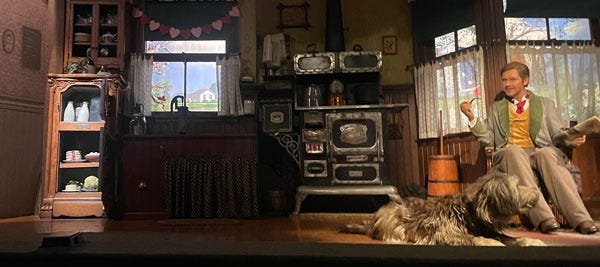
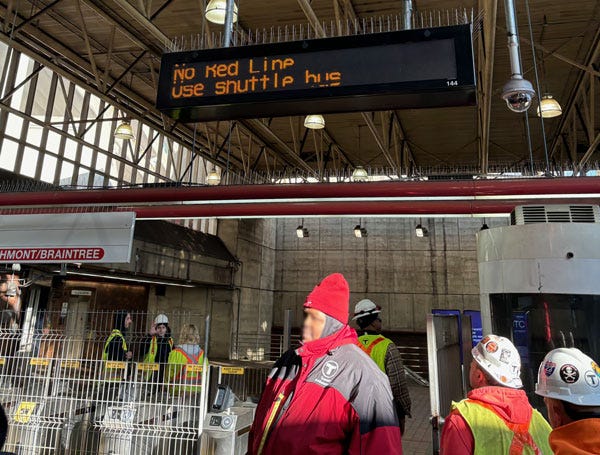
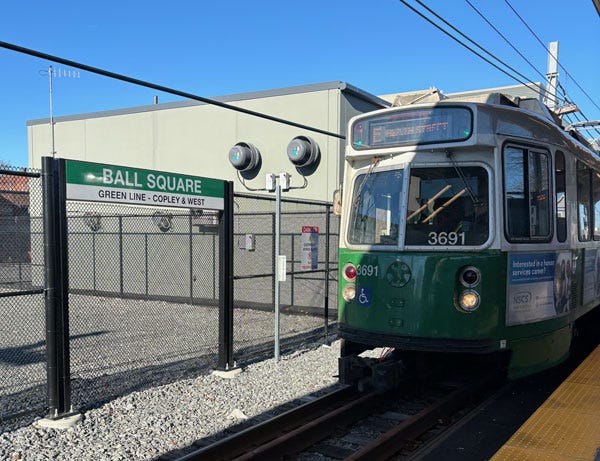

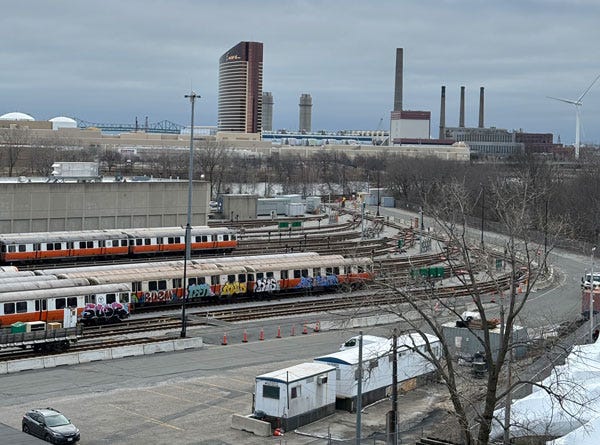
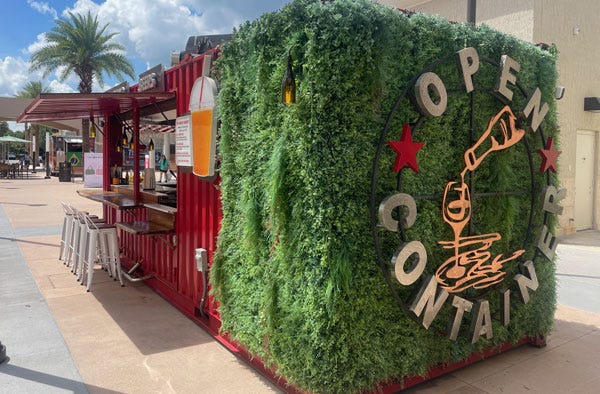

Rich people take public transportation - yes that is 100% correct. When I lived in Manhattan I would take the bus down 5th Avenue to work every day- everyone that got on the public bus was heading to work or dropping their kids to private school. This was their neighborhood bus- moms carrying $3k designer bags and wearing $500 sneakers and their kids draped in Canadian goose jackets. It was very entertaining and the view of Central Park was unbeatable.